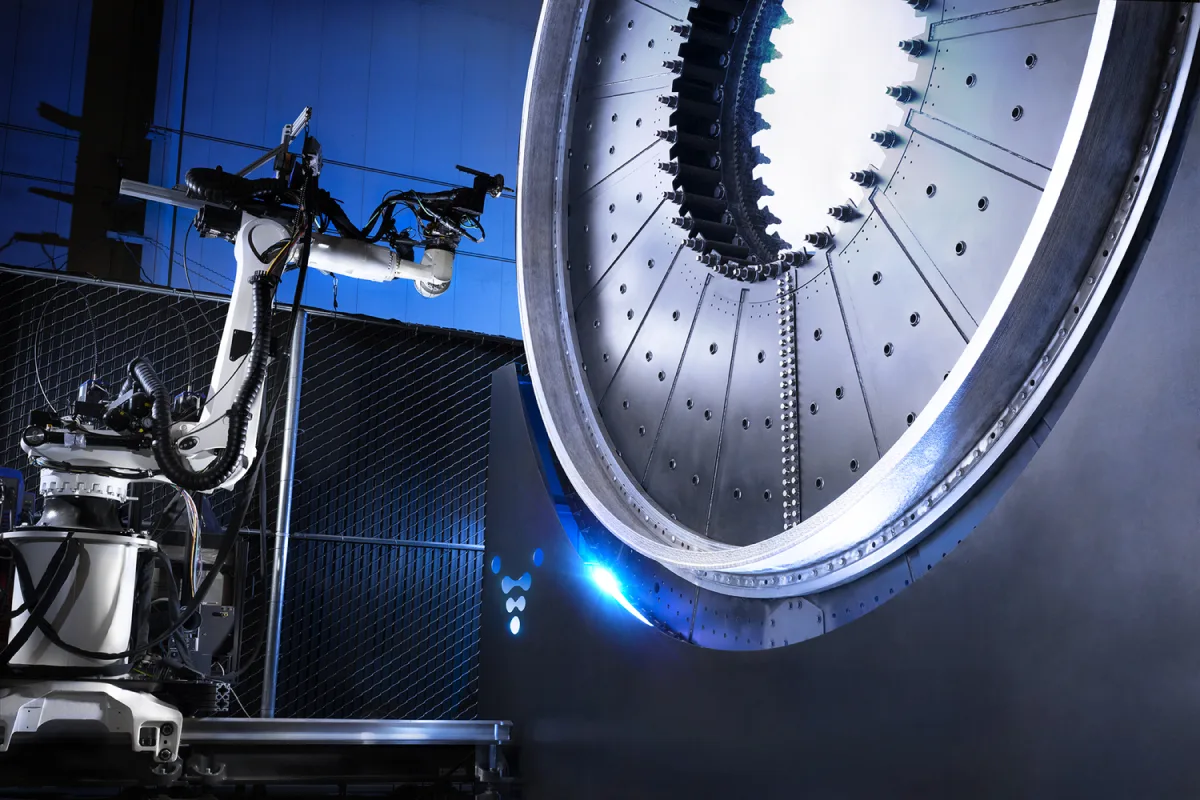Pioneering Spacecraft Construction with Additive Manufacturing
In the relentless pursuit of innovation in space technology, NASA’s partnership with Relativity Space marks a significant milestone, showcasing the transformative potential of 3D printing in rocket construction. This collaborative venture not only propels the speed and efficiency of rocket production to unprecedented heights but also holds the promise of making space travel more accessible and cost-effective, revolutionizing the aerospace industry.
ADVERTISEMENT
“NASA has certainly helped accelerate the progress we’ve been making across propulsion, across test and launch infrastructure, and in the flight of our vehicles,” says Scott Van Vliet, current advisor and former senior vice president of software engineering, avionics, and additive manufacturing at Relativity. This partnership is not just about technology; it’s about a shared vision to redefine the boundaries of space exploration.
Revolutionizing Rocketry with 3D Printing

Relativity Space’s Terran 1, predominantly crafted through additive manufacturing, signifies a monumental leap in space technology. This rocket, being 85% 3D printed by mass, exemplifies how integrating this innovative manufacturing process can expedite the entire lifecycle of spacecraft production, from design to launch.
- Rocket: Terran 1
- 3D Printing Contribution: 85% by mass
- Manufacturing Method: Stargate printer, wire arc additive manufacturing
- Engine Development: Collaboration with NASA’s Marshall Space Flight Center
- Testing Facility: Stennis Space Center, Bay St. Louis, Mississippi
- Material Innovation: Copper-chromium-niobium alloy (GRCop-42)
- Performance: Operates from cryogenic temperatures to 6,000°F at high pressures
ADVERTISEMENT
NASA-Relativity Partnership: A Symbiotic Relationship
The partnership, formalized through a series of Space Act Agreements, has enabled a symbiotic technical collaboration between NASA and Relativity Space. Engineers from both entities have been working hand in hand, focusing on refining the Terran 1’s engine design and enhancing its overall performance, leveraging NASA’s profound expertise and rich legacy in space technology.
The Role of Additive Manufacturing in Rocket Engine Development
The intricate and time-consuming process of developing rocket engines is significantly streamlined through additive manufacturing. This advanced production technique not only reduces the lead times and associated costs but also introduces a new era of precision and adaptability in spacecraft engineering, as evidenced by the development of the Terran 1.
Stennis Space Center: A Hub for Innovation and Testing
The Stennis Space Center in Mississippi has emerged as a critical hub for the testing and refinement of the Terran 1. This facility, equipped with state-of-the-art infrastructure and a wealth of technical expertise, has provided Relativity Space with an unparalleled platform to test, refine, and perfect its pioneering rocket technology.
ADVERTISEMENT
Future Horizons
As Relativity Space embarks on the development of the Aeon R engine, the partnership with NASA continues to fuel innovation in 3D printing technology. This collaboration is not just about building rockets; it’s about setting new standards, pushing the boundaries of what’s possible, and paving the way for more ambitious and far-reaching space exploration missions.
The alliance between NASA and Relativity Space, epitomized by the Terran 1 rocket, not only showcases the potential of additive manufacturing in revolutionizing spacecraft construction but also sets a new paradigm for future space endeavors. This collaboration paves the way for more efficient, cost-effective, and high-performing spacecraft, ultimately accelerating humanity’s journey into the cosmos.

































